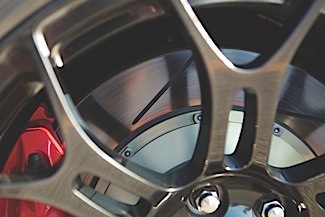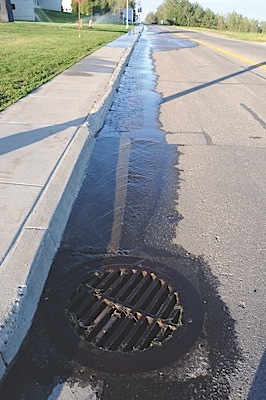
New legislation is changing what parts can be installed on your customers’ vehicles.
The goal of these mandates is to reduce emissions and prevent harmful chemicals from reaching waterways. The spirit of the new regulations is to preserve public assets like parks and streams that improve the quality of life for the citizens of the state.
But, the question always has to be: At what cost does this come to the safety and economics of our industry? If people can’t afford to have their cars serviced, or it becomes cost prohibitive to develop environmentally friendly products, the cost to society could be greater than the loss of clean waterways.
Wheel Weights
In 2008, The EPA reported that about 1.6 million lbs. of lead falls off vehicles each year. Like copper, lead can be toxic for watersheds. While 11 states have legislation concerning lead wheel weights on the books or waiting approval, manufacturers of wheel weights have moved toward products that are lead free to avoid costly regulation.
The solution was alternative materials like zinc and tungsten. Manufacturers complied with the law and today it is hard to find a lead weight.

Brake Pads
Brake pads pose a more difficult challenge to manufacturers. Copper and other toxic substances used in some brake pads are ending up in rivers and streams. This is due to brake dust migrating from the pads to the road. The brake dust is then washed into storm drains or the watershed next to the road.
Copper is used in brake pads as an abrasive to create friction. It is soft and is kind to rotors. But to some fish, it can inhibit their sense of smell and prevent their ability to find their spawning grounds. If copper concentration hits critical levels, it can kill microorganisms that are the critical link for the aquatic food chain.
California is phasing in regulation over the next decade to reduce levels of copper. The next deadline, January 2014, necessitates cadmium, chromium and other heavy metal levels in friction materials to be no more than 0.1 percent by weight. In 2021, a two-step reduction in copper percentage by weight requirement will commence with the mandate that brake friction materials must contain no more than 0.5 percent copper.
Starting in 2013, brake manufacturers selling in Washington state had to report the use of copper, nickel, zinc and antimony in brake friction materials. In order to comply with the Better Brakes Law, brake pads may only contain trace amounts of asbestos, cadmium, chromium, lead and mercury in 2014; but by 2015, all brakes must be certified and marked to indicate the absence of these same materials.
Oregon, New York, Rhode Island and Hawaii also are in the process of drafting legislation to limit copper in brake pads.
There is no direct replacement for copper in non-asbestos organic friction materials. Manufacturers instead have to tune the formulations so copper content is below mandated levels while still keeping performance and noise levels the same as before.
For some brake pad manufacturers that specialized in semi-metallic pads, the ban does not change how their pads are formulated. For manufacturers that specialized in adhesive-type friction pads, it has been difficult to get the level of copper to legal levels.
The full effect of these brake pad copper laws are more than 10 years out, but many components of the laws are being phased in right now. Since Jan. 1, 2013, friction material manufacturers doing business in Washington state are required to submit a report on their use of copper, nickel and other restricted metals. By 2015, all new inventory must be labeled saying if it complies with the law. Manufacturers, distributors and “installers” have 10 years to sell off existing, unapproved inventory. In California, the law also restricts the use of the cadmium, chromium, lead and its compounds on Jan. 1, 2014.
The laws put new technical and financial burdens on friction material manufacturers. Under the Washington state law, friction material formulation has to be tested by an approved laboratory and the applications that use this material must be submitted so the right label can appear on the box. Every step in the process costs money and time. These burdens may be so great that some manufacturers could get out of these markets completely.
What is next?
As states try to improve air and water quality, any product that contains harmful chemicals will come under scrutiny. Also, more and more states are looking at annual emissions testing to ensure that older vehicles are serviced properly over the longer lifespans.








